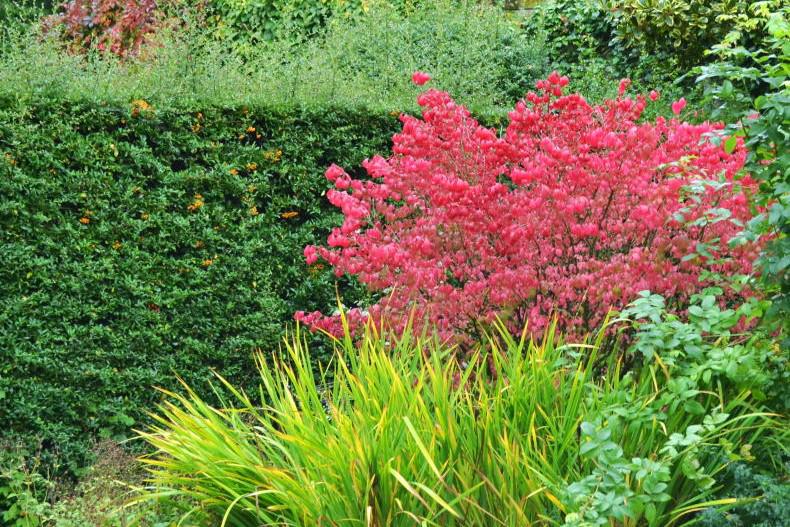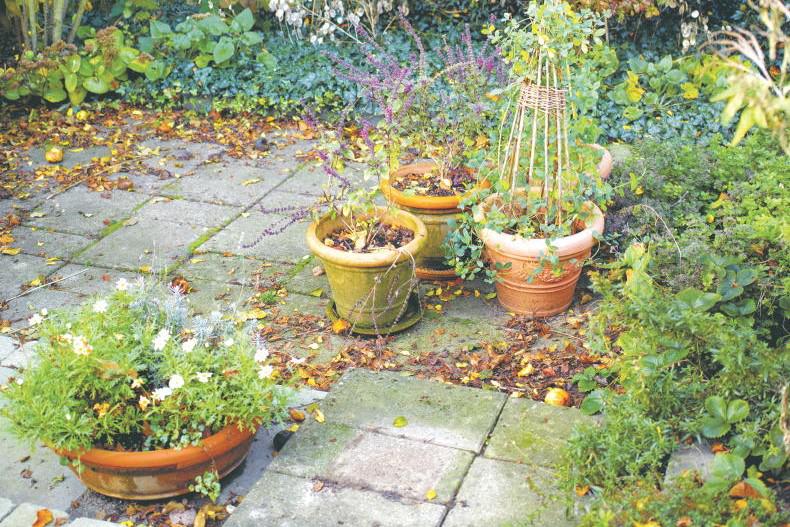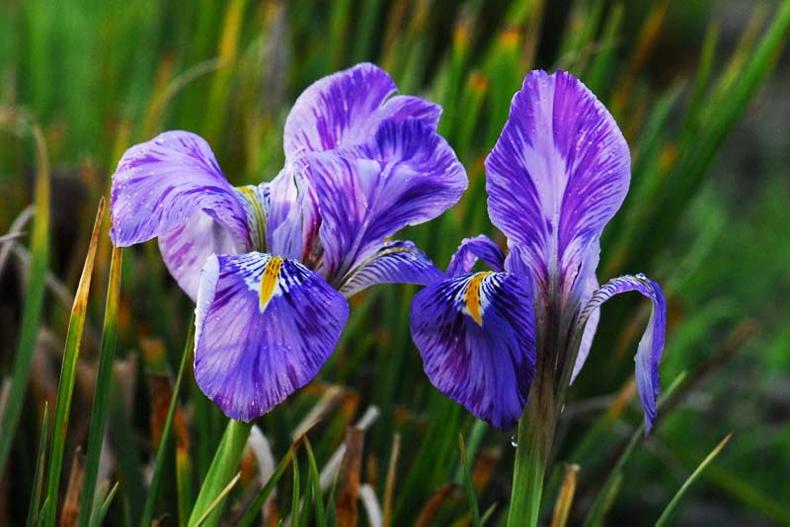Name: The common names of this plant are purple gromwell and blue star flower but these names are hardly ever, if ever, used. In general, the correct botanical name, Lithodora, is also used as the common name.
Botanical name: While the plant has a paucity of common names, it has no shortage of botanical names. Currently, it has the name Lithodora, following on from the previous Lithospermum and Glandora.
The name Lithodora is derived from Greek for stone or rock, and gifted with scent. Lithospermum means hard seeds. The word diffusum is Latin for spreading, which it does.
Family: Lithodora is part of the borage family, the Boraginaceae, which contains borage, echium and comfrey. It is very attractive to bees, including borrowing bees and other non-social, solitary bees.
Lithodora is a genus of evergreen shrubs that are low growing in the manner of heathers and rock roses. They originated around Turkey and are native to the Mediterranean region; Spain, Portugal, Italy, and Algeria in North Africa. Lithodora has become popular for its blue flowers, which are produced profusely in late spring and early summer.
The shade of blue can vary between different species. For instance, the species Lithodora oleafolia (the species name meaning olive-leaved), has pale blue, cup-shaped flower? as opposed to the star-shaped of ‘Heavenly Blue’, which is the cultivar usually seen in gardens and for sale.
Lengthways, the little flowers are trumpet-shaped, brilliant blue at the mouth and a flash of rose-purple along the stem of the flower. The contrast of colours makes for a very vibrant display.
Garden use
Lithodora, as might be expected from the dry Mediterranean conditions that pertain where it grows naturally, is an ideal plant for growing in a rock garden or similar conditions such as an area of gravel. Its low-growing habit makes it a useful ground cover plant with its evergreen foliage offering a challenge to rock-garden weeds.
It can also be planted to tumble over the edge of a low wall or the front of a border. It can be planted on its own in parts and moved into prime areas when in flower, being retired to the background as the flowers fade out. It also takes clipping very well, which is carried out after flowering has finished in summer.
Growing in scrub land and coping with hot summers, Lithodora often acts as a scrambling plant, growing through others, and using them to piggyback-up to the light. It is not a true climber as such but has the ability to climb, or scramble, through other more upright plants.
Growing Lithodora
Lithodora is a relatively easy plant to grow, matching its territory of origin and the conditions that develop there. It grows well in rocky-quite-stony ground where some decaying leaf mould settles over and between the stones. While this offers ideal conditions, the plant is not terribly fussy, except that it does not like wet ground, especially in winter, which causes the roots to die.
As might be expected, this plant likes full sunshine. Although it will survive in light shade, producing as much flowering as it would in good light. Any ordinary soil will be suitable as regards the nutrients, it not being a hungry feeder.
Overfeeding can lead to leafy growth and fewer flowers. Plants can be raised by cuttings in summer or by division in autumn.
pumpkins, courgettes and
butternut squash
Pumpkins, courgettes and butternut squash are part of the same family that also includes cucumbers and gourds. Pumpkins are not hardy and cannot be started outdoors until the danger of frost has passed between mid-May in the south and coastal areas and mid-June in the midlands and north.
At the same time, the plants need to make as much growth as possible during the summer to fully ripen the fruits and grow them to a good size. So, this means sowing in pots indoors in a greenhouse, porch or conservatory, or even a bright window sill. The seeds can be sown from late March to early May. Later sowing runs the risk of the plants running out of warm weather, as can happen if the summer is cool. There are many varieties offered by the seed houses, some of them small and neat for storage. Sow one seed in a small pot and pot up as the plant fills the pot with roots, not giving it a check. Do not be rushing to plant out and be sure to give enough space for each plant to grow. Pumpkins, at least the larger varieties such as ‘Atlantic Giant’, can make a big plant with shoots extending beyond 3m.
However, that might seem a lot in a small garden, but as summer progresses and crops mature the pumpkin shoots have a way of finding more space. Pumpkins need about 1.5 metres each way and courgettes and squashes need at least 1m each way. When planting any of these pumpkin family plants, it always pays off to plant each plant on a mound of well-rotted garden compost dug into the planting station.
Keep the young plants nicely watered until they have obviously rooted, and then during any dry spell of more than a few days. Do not worry if flowers are slow to develop fruit on pumpkins and squashes. Courgettes, which are marrows, are very quick to produce some usable fruits.
Trees, shrubs and roses
Newly planted trees and shrubs can be slow to root out and are very vulnerable to drought. Water heavily once or twice during any dry spell of more than a week. Control weeds and grass around young trees because grass especially can provide severe competition.
Fruit, vegetables and herbs
Make repeat sowings of fast-maturing vegetables, especially salads that go over quickly. Thin out and transplant vegetables that have reached suitable size, and control weeds early. After any continuously wet period, spray potatoes for blight, if warnings are given.
Flowers
Feed all containers weekly if they have not had slow-release fertiliser pellets added to the compost. Snails can still cause serious damage during a few rainy days, especially a close, wet night. Watch for greenflies on bedding plants and container plants and control them.
Lawns
Grass growth has been phenomenal in recent weeks, and there’s no need to consider any feeding at this stage of the season. The reasons have been twofold: first, there was an early breakdown of organic material in the soil and then nitrogen produced by lightning.
Greenhouse and house plants
Continue to feed greenhouse plants and water freely to maintain strong growth. Use a shading material if the greenhouse gets too hot. Check greenhouse plants for scale insects, greenflies and red spider mites, all of which can build up very rapidly at the time of year.
Read more
Gardening with Gerry: double daisies and this week in the kitchen garden
Gardening with Gerry: showstopping Senetti and no blossom, no fruit
Name: The common names of this plant are purple gromwell and blue star flower but these names are hardly ever, if ever, used. In general, the correct botanical name, Lithodora, is also used as the common name.
Botanical name: While the plant has a paucity of common names, it has no shortage of botanical names. Currently, it has the name Lithodora, following on from the previous Lithospermum and Glandora.
The name Lithodora is derived from Greek for stone or rock, and gifted with scent. Lithospermum means hard seeds. The word diffusum is Latin for spreading, which it does.
Family: Lithodora is part of the borage family, the Boraginaceae, which contains borage, echium and comfrey. It is very attractive to bees, including borrowing bees and other non-social, solitary bees.
Lithodora is a genus of evergreen shrubs that are low growing in the manner of heathers and rock roses. They originated around Turkey and are native to the Mediterranean region; Spain, Portugal, Italy, and Algeria in North Africa. Lithodora has become popular for its blue flowers, which are produced profusely in late spring and early summer.
The shade of blue can vary between different species. For instance, the species Lithodora oleafolia (the species name meaning olive-leaved), has pale blue, cup-shaped flower? as opposed to the star-shaped of ‘Heavenly Blue’, which is the cultivar usually seen in gardens and for sale.
Lengthways, the little flowers are trumpet-shaped, brilliant blue at the mouth and a flash of rose-purple along the stem of the flower. The contrast of colours makes for a very vibrant display.
Garden use
Lithodora, as might be expected from the dry Mediterranean conditions that pertain where it grows naturally, is an ideal plant for growing in a rock garden or similar conditions such as an area of gravel. Its low-growing habit makes it a useful ground cover plant with its evergreen foliage offering a challenge to rock-garden weeds.
It can also be planted to tumble over the edge of a low wall or the front of a border. It can be planted on its own in parts and moved into prime areas when in flower, being retired to the background as the flowers fade out. It also takes clipping very well, which is carried out after flowering has finished in summer.
Growing in scrub land and coping with hot summers, Lithodora often acts as a scrambling plant, growing through others, and using them to piggyback-up to the light. It is not a true climber as such but has the ability to climb, or scramble, through other more upright plants.
Growing Lithodora
Lithodora is a relatively easy plant to grow, matching its territory of origin and the conditions that develop there. It grows well in rocky-quite-stony ground where some decaying leaf mould settles over and between the stones. While this offers ideal conditions, the plant is not terribly fussy, except that it does not like wet ground, especially in winter, which causes the roots to die.
As might be expected, this plant likes full sunshine. Although it will survive in light shade, producing as much flowering as it would in good light. Any ordinary soil will be suitable as regards the nutrients, it not being a hungry feeder.
Overfeeding can lead to leafy growth and fewer flowers. Plants can be raised by cuttings in summer or by division in autumn.
pumpkins, courgettes and
butternut squash
Pumpkins, courgettes and butternut squash are part of the same family that also includes cucumbers and gourds. Pumpkins are not hardy and cannot be started outdoors until the danger of frost has passed between mid-May in the south and coastal areas and mid-June in the midlands and north.
At the same time, the plants need to make as much growth as possible during the summer to fully ripen the fruits and grow them to a good size. So, this means sowing in pots indoors in a greenhouse, porch or conservatory, or even a bright window sill. The seeds can be sown from late March to early May. Later sowing runs the risk of the plants running out of warm weather, as can happen if the summer is cool. There are many varieties offered by the seed houses, some of them small and neat for storage. Sow one seed in a small pot and pot up as the plant fills the pot with roots, not giving it a check. Do not be rushing to plant out and be sure to give enough space for each plant to grow. Pumpkins, at least the larger varieties such as ‘Atlantic Giant’, can make a big plant with shoots extending beyond 3m.
However, that might seem a lot in a small garden, but as summer progresses and crops mature the pumpkin shoots have a way of finding more space. Pumpkins need about 1.5 metres each way and courgettes and squashes need at least 1m each way. When planting any of these pumpkin family plants, it always pays off to plant each plant on a mound of well-rotted garden compost dug into the planting station.
Keep the young plants nicely watered until they have obviously rooted, and then during any dry spell of more than a few days. Do not worry if flowers are slow to develop fruit on pumpkins and squashes. Courgettes, which are marrows, are very quick to produce some usable fruits.
Trees, shrubs and roses
Newly planted trees and shrubs can be slow to root out and are very vulnerable to drought. Water heavily once or twice during any dry spell of more than a week. Control weeds and grass around young trees because grass especially can provide severe competition.
Fruit, vegetables and herbs
Make repeat sowings of fast-maturing vegetables, especially salads that go over quickly. Thin out and transplant vegetables that have reached suitable size, and control weeds early. After any continuously wet period, spray potatoes for blight, if warnings are given.
Flowers
Feed all containers weekly if they have not had slow-release fertiliser pellets added to the compost. Snails can still cause serious damage during a few rainy days, especially a close, wet night. Watch for greenflies on bedding plants and container plants and control them.
Lawns
Grass growth has been phenomenal in recent weeks, and there’s no need to consider any feeding at this stage of the season. The reasons have been twofold: first, there was an early breakdown of organic material in the soil and then nitrogen produced by lightning.
Greenhouse and house plants
Continue to feed greenhouse plants and water freely to maintain strong growth. Use a shading material if the greenhouse gets too hot. Check greenhouse plants for scale insects, greenflies and red spider mites, all of which can build up very rapidly at the time of year.
Read more
Gardening with Gerry: double daisies and this week in the kitchen garden
Gardening with Gerry: showstopping Senetti and no blossom, no fruit










SHARING OPTIONS